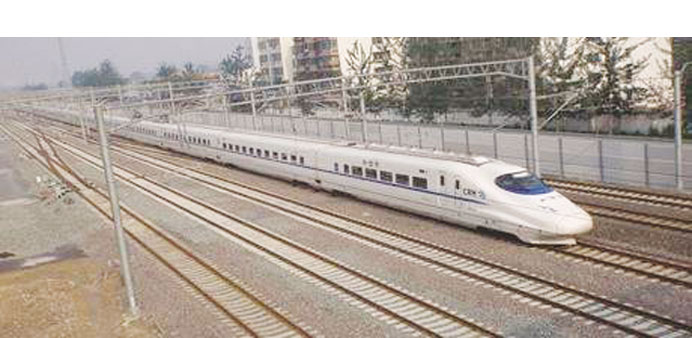DPA/Bangkok
Thailand is poised to place its economic growth aboard a $60bn high-speed train project which could help drag the Asian country out of the middle-income trap.
Tomorrow, the cabinet is expected to accept a bill to allow the government to raise 2.2tn baht ($73.3bn) in off-budget spending on infrastructure investments over the next seven years, 80% of which is destined for new railways linking Bangkok to the provinces.
The legislation would then need approval from parliament, which is expected by the end of the month. The special law is controversial as it allows the Finance Ministry to borrow above the annual budget, despite rules that limit public debt to less than 60% of gross domestic product.
“There is a danger that the law will become a loophole,” said former finance minister Chalongphob Sussangkarn, a senior economist at the Thailand Development Research Institute (TDRI). “It bypasses all the fiscal discipline in the system.”
The new law also raises transparency questions.
“If it is off-budget, there is no parliamentary scrutiny, so the disbursement procedures can become lax and fiscal prudence goes out of the window,” said Korn Chatikavanij, another former finance minister and deputy leader of the opposition Democrat Party.
Korn said the government’s normal budget could cover the 2.2tn-baht expenditure for the project that most parties seem to agree is necessary. A high-speed rail link between Bangkok and Nong Khai in north-eastern Thailand was a key campaign promise of the Democrat Party for the 2010 election.
“The infrastructure investments will not only increase GDP by an average of 1% per year but also create 500,000 jobs,” Prime Minister Yingluck Shinawatra said recently. The Finance Ministry has predicted the trains will help lift the country out of the middle-income trap - in which a country’s economy stagnates before it becomes wealthy - by 2020.
The railways project is also expected to cut national fuel costs by 300bn baht ($10bn) a year and create new domestic trade routes.
It would eventually link Thailand to China via a $7bn high-speed railway planned through landlocked Laos, and through Malaysia to Singapore.
According to the initial plan, the high-speed tracks will be built parallel to existing rails operated by the state railway authority from Bangkok to Chiang Mai, Nakhon Ratchasima, Hua Hin and Pattaya.
“I think we will start them all at the same time,” Transport Minister Chadchart Sittipunt said. “We will start bidding in the third of fourth quarter, and construction begins next year.”
The project’s success will hinge on the performance of Chadchart, a former professor of civil engineering at Chulalongkorn University who was appointed minister in October.
Chadchart has come with a clean reputation to a ministry regarded as corrupt. “The biggest credit I would give this government is for giving this job to Chadchart. He’s a very good guy,” Korn said. “If he stands firm, and makes sure no politicians make money from this, that’s very good news for the country.”
So far, only Japanese and Chinese firms have expressed serious interest in the high-speed train project. “I haven’t heard anything from the German firms,” Chadchart said.
One problem Chadchart faces is what to do with State Railways of Thailand (SRT), the 122-year-old enterprise that is losing about 10bn baht a year.
“If the new high-speed trains are run by the SRT, it’s going to be a complete disaster,” Chalongphob said.
The TDRI, which researched the feasibility of the high-speed rail project last year, concluded that it would benefit the country if the government insisted that international bidders include local parts in the trains. That would protect Thailand from becoming totally dependent on imports to keep the trains going in the future.
“I think there is a conjunction of interests to make this project happen, but the question is whether it will be worth it for Thailand,” Chalongphob said.

